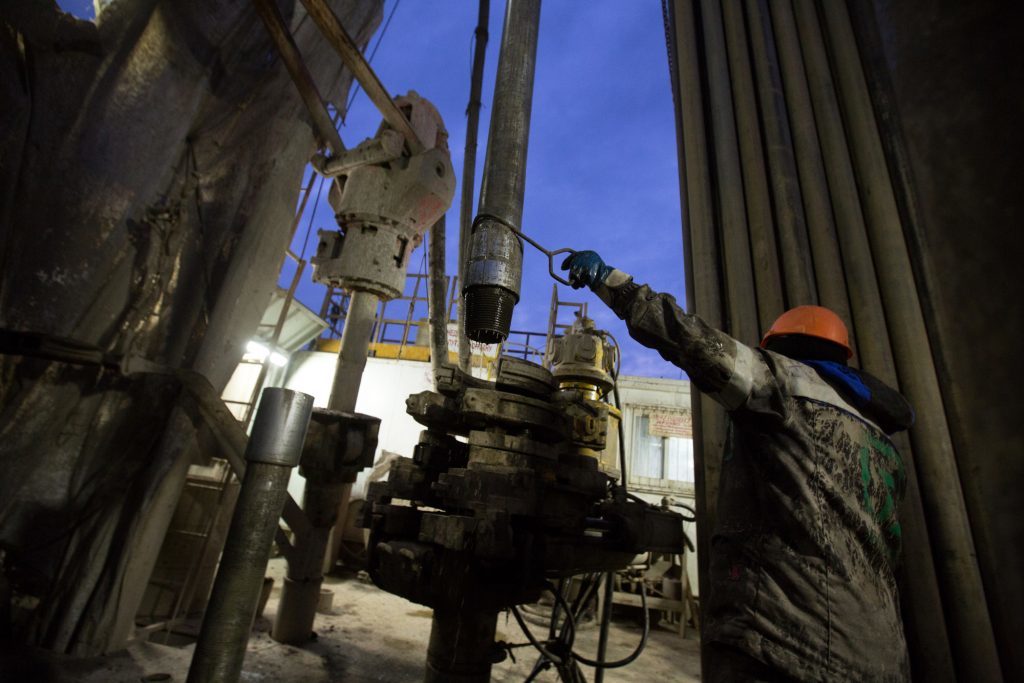
Brent crude touched $70 a barrel on Thursday, a level it last saw three years ago. That might start to look like a level where OPEC could say that its work to rebalance the market is done.
After all, its output deal has done a pretty good job of draining surplus inventories. And U.S. oil stockpiles, including crude, refined products and the oil stored in the Strategic Petroleum Reserve, have fallen by around 147 million barrels in the past 12 months and now stand just 23 million barrels above their five-year average, according to weekly government data.
But there is more to the run-up in oil prices than the drop in American stockpiles. And OPEC should should think very carefully before changing its strategy.
Inventory levels outside the U.S. are far more opaque. While the U.S. provides comprehensive data weekly, the Paris-based International Energy Agency only assesses OECD stockpiles with a 2-month time lag — so the latest results are for the end of October. They also show excess stockpiles coming down since the middle of 2017. But they also show the rising five-year average, the baseline for measuring excess crude, is having a much bigger impact on the amount of excess crude in storage than is the case in the U.S. That suggests inventories are still too high.
That is true whether you look at the absolute volumes of stockpiles, or the number of days of demand that they cover. If you move beyond the developed countries of the OECD, the picture is even less clear. So, while U.S. oil stockpiles may be approaching their five-year average level, the IEA data suggest the same is not yet true elsewhere.
This is not the only factor that OPEC and friends need to consider. By choosing once again to act as the world’s swing supplier, seeking to balance the volume of oil available against the amount needed by consumers, they have thrown other producers a lifeline. You need look no further than the EIA’s U.S. production figures.
U.S. output has soared on the back of rising prices and will continue to rise. The monthly assessment for October was more than 400,000 barrels a day above the level derived from weekly data. The daily average for U.S. oil production will exceed 10 million barrels by February, four months sooner than the government forecast last month.
As I warned when OPEC and its friends embarked on this strategy back in 2016, it risked locking itself into a cycle of having to make ever longer and deeper cuts in order to meet rising output from other producers, particularly the U.S. There is already talk of U.S. producers locking in these prices, not just for 2018, but for 2019, 2020 and beyond, which will underpin continued output growth. The IEA expects that Brazil and Canada will also boost output at current prices.
To be sure, stronger-than-expected demand growth helped producers to drain excess stockpiles in 2017, and OPEC is forecasting a similar increase in the world’s oil use this year. But that would be the fourth year with demand growth running above 1.5 percent — not unheard of, but there have only been two other such four-year stretches in the last 40 years. The IEA takes a slightly more cautious view, seeing global demand growth in 2018 at 1.3 percent. The difference seems small, but, together with more robust U.S. output, a lower pace of growth would be enough to wipe out the prospect of any 2018 stockdraw.
Rising end-user prices could start to dampen some of the consumer enthusiasm, particularly if they persist through the U.S. summer driving season. If demand growth isn’t as strong as OPEC forecasts, then the group’s expectation of arriving at a balanced market by late 2018 could be pushed back again. For the immediate future, there is OPEC’s perennial fear of the second quarter, when it sees demand for their crude weakening in the face of refinery maintenance. This was one of the reasons that they decided to extend their output deal, avoiding putting more oil into the market just as demand was expected to hit a soft patch.
Unanticipated supply disruptions — most notably to the UK’s Forties crude, which helps set the price of the global Brent benchmark — helped to drive prices up to their recent height. The premium for prompt oil over future deliveries that resulted has drawn a flood of speculative money into crude, helping to prolong the upward momentum. OPEC and its friends shouldn’t get distracted by this flood of hot money. Precipitate action to boost supply now would risk undermining the impact of their year of sacrifice.
Recommended for you
